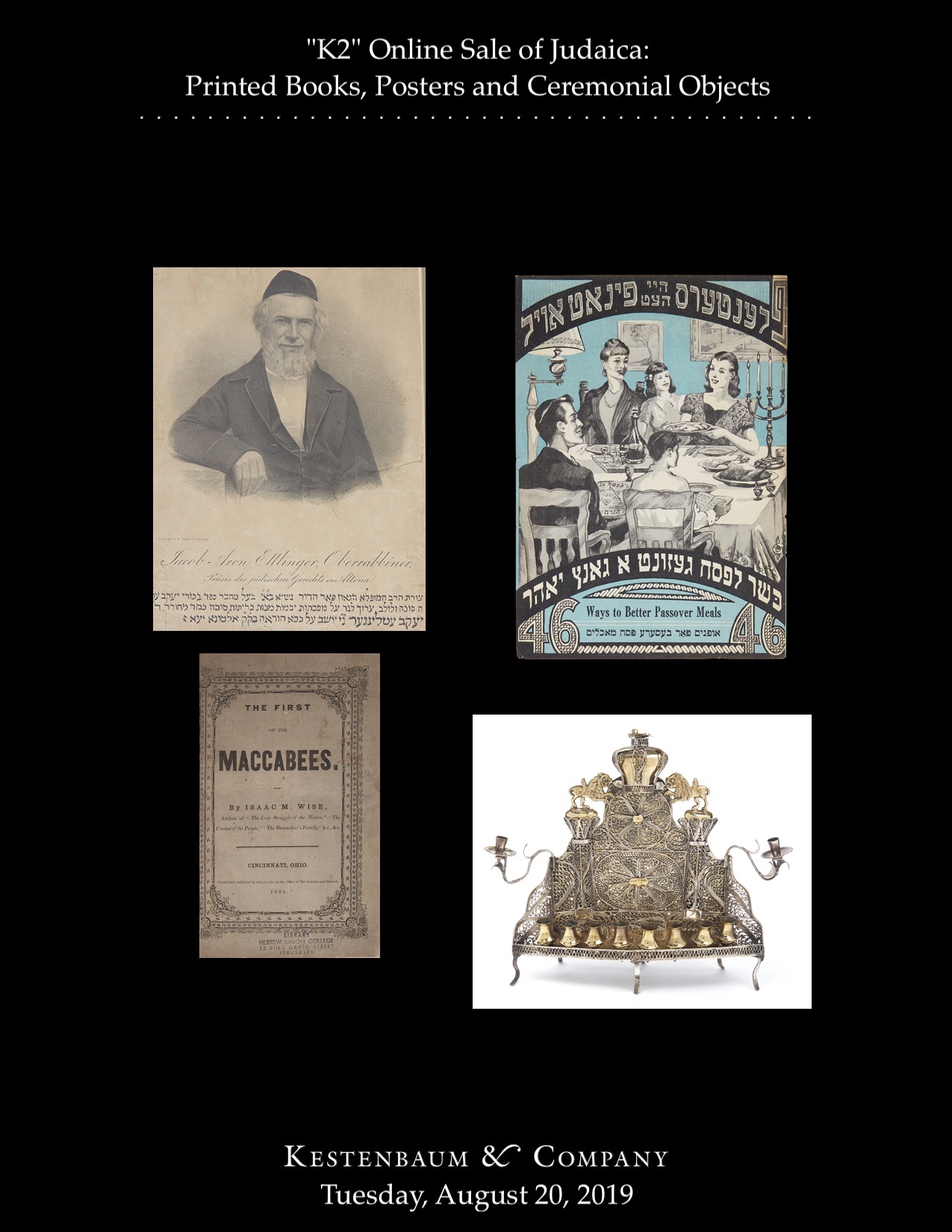Joseph Krauskopf. Epochs of Jewish History, Epoch I: The Mosaic Age. A Sunday Lecture Before the Reform Congregation of Keneseth Israel. December 16th, 1888. <<* WITH:>> Epoch II: The Prophetic Age. Delivered on December 23rd, 1888.

AUCTION 84 |
Tuesday, August 20th,
2019 at 1:00pm
"K2" Online Sale of Judaica: Printed Books, Posters and Ceremonial Objects Including large sections devoted to: American-Judaica, Cook-Books, Holy Land and Minhagim Books
Lot 14
(AMERICAN JUDAICA)
Joseph Krauskopf. Epochs of Jewish History, Epoch I: The Mosaic Age. A Sunday Lecture Before the Reform Congregation of Keneseth Israel. December 16th, 1888. <<* WITH:>> Epoch II: The Prophetic Age. Delivered on December 23rd, 1888.
(Philadelphia): S.W. Goodman 1888
Est: $100 - $150
PRICE REALIZED $50
Rabbi Joseph Krauskopf (1858-1923) was a leading Reform Rabbi of the 19th century, both in the U.S. and internationally. He served, starting in 1887, as the third senior Rabbi of Congregation Keneseth Israel, Philadelphia, which, though originally Orthodox, aligned itself with the Reform movement in 1855. By the beginning of the 20th century, in part due to Rabbi Krauskopf’s celebrated sermons, it had the largest membership of any synagogue in the U.S.
These two pamphlets are the first in Krauskopf’s seven-part lecture series on Jewish history. At the beginning of the first lecture, he declares his reluctance to be discussing things that “feed, exclusively, the mind, and to starve the heart.” He finds the topic nevertheless necessary because “right-acting,” the mission of the synagogue, is founded upon “right-thinking.” The first lecture begins with Abraham who, while he may not have been the “author of the monotheistic God-conception,” was unique in being the “first Religious Reformer.” Rabbi Krauskopf similarly attributes to Moses not originality in his ideas but morality in his choosing of the proper ethical injunctions of past civilization.
The second lecture proceeds from the era of Joshua to the Babylonian exile, seeking to answer the question: “Who and what were [the] prophets?” Again, he describes them as the “Religious Reformers” of their age, who truly “outlined for us out present religion.”
